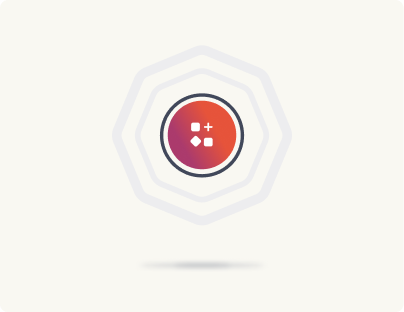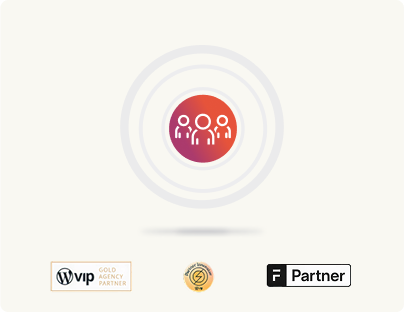Contentful vs headless/hybrid WordPress: Working with frontends
When evaluating Contentful vs WordPress for frontend capabilities, the contrast goes deeper than APIs and rendering. It’s about how much control, effort, and workflow compatibility each system gives your team, developers, and content creators alike.
So let’s explore how both platforms power frontends, handle design systems, and manage previews in a composable architecture.
Working with custom frontend tech stacks
Let’s look at Contentful first. So Contentful is a pure headless CMS, meaning it doesn’t include a predefined frontend. Instead, it serves content via APIs (typically RESTful or GraphQL APIs), allowing developers to build entirely custom frontends using the frameworks of their choice.
This API-first approach provides complete flexibility, enabling you to:
- Build bespoke frontends tailored to specific user experiences.
- Use modern frameworks like React, Vue, or Angular to power dynamic frontends.
- Deliver seamless “multiexperiences” across web, mobile, and IoT by reusing structured content on multiple platforms.
However, the lack of a default frontend means that all presentation-layer decisions, from design implementation to performance optimization, must be handled by the development team. This increases initial development complexity and costs, especially if the team lacks experience with frontend technologies or API integrations.
Let’s look at WordPress now.
Headless and hybrid WordPress setups share similarities with Contentful in that they decouple the frontend from the backend. Content is accessed via WordPress’s REST API or GraphQL endpoints, which developers can use to build custom frontends.
Enterprises leveraging headless WordPress often:
- Build frontends using popular JavaScript frameworks for SPAs or PWAs.
- Utilize WordPress’s mature plugin ecosystem to simplify API-driven development (e.g., by generating custom API endpoints) and for powering the backend content creation/editorial workflows.
- Benefit from extensive community support and resources, which streamline the learning curve for headless architecture.
Unlike Contentful, WordPress’s flexibility extends to its ability to function as a hybrid CMS, combining traditional and headless approaches. This hybrid model allows businesses to:
- Use the default WordPress frontend (themes) for simpler pages like blogs or landing pages.
- Employ a decoupled frontend for complex, dynamic sections of their site and for all the desired target channels.
This mix-and-match capability reduces development overhead by enabling teams to retain familiar workflows for straightforward use cases while leveraging headless advantages where needed. Hybrid WordPress setups strike a balance between traditional and headless models. They retain the benefits of WordPress’s default frontend rendering while enabling API-driven integrations for specific components or features. This approach is especially beneficial for enterprises that require both a stable, ready-to-use frontend and the ability to experiment with cutting-edge technologies for specific projects.
The role of design systems
Design systems play a critical role in achieving frontend consistency and efficiency across content management and delivery platforms. Both Contentful and WordPress benefit from integrating robust design systems, but the implementation differs based on the CMS’s architecture.
In Contentful
Design systems are often implemented as reusable UI components in frontend frameworks. Contentful also has its open-source design system to standardize these: Forma 36: The Contentful Design System.
But to make everything work, teams must ensure that their UI components align with the structured content served by Contentful APIs. This requires close collaboration between designers and developers. (This is true for any headless setup, though.)
Also, content modeling in Contentful directly influences how components interact with content, making early design-system alignment crucial. (Again, this is true for any headless setup.)
In WordPress (headless or hybrid)
Design systems can integrate really well: Design systems can be embedded in themes for traditional frontends or implemented in custom JavaScript frontends for headless setups.
They bring hybrid compatibility too: Hybrid WordPress setups benefit significantly from design systems by providing consistency across traditional and decoupled frontends. For example, a design system’s styles and components can be shared between theme-based pages and React-based applications.
The Gutenberg editor can do a lot of the heavy lifting: When implemented effectively, Gutenberg becomes a natural ally in any hybrid or headless WordPress setup, especially when tied to a well-structured design system. Its modular approach to content creation aligns seamlessly with the component-driven nature of modern design systems, creating a powerful synergy that benefits both content teams and developers.
The Gutenberg block editor, in fact, further enhances frontend capabilities in WordPress. While traditionally associated with monolithic setups, Gutenberg can be configured to work in headless and hybrid environments. In fact, with the right setup, its reusable blocks and intuitive interface allow developers to define content structures that seamlessly integrate into custom frontends. It’s also possible to use Gutenberg for building and maintaining complex layouts, even in decoupled environments.
Implementing previews
By default, previews are missing from both Contentful and hybrid/headless WordPress implementations.
In Contentful
One standout feature of Contentful is Contentful Studio. This tool empowers content teams to preview and manage content more effectively in real-time. With Contentful Studio, teams can visualize how content changes will appear on different devices or layouts, ensuring a seamless integration between content management and frontend development. However, the freedom Contentful provides also requires significant technical expertise and effort to establish frontend parity with other platforms. Implementing Contentful Studio can pose challenges, such as the need for deep integration expertise, ensuring alignment between design and development, and managing preview delays or API dependencies during initial setup.
In headless/hybrid WordPress
Adding previews in a headless or hybrid WordPress setup is crucial to empowering content creators with the ability to visualize their work accurately before it goes live. While WordPress offers robust preview functionality in traditional setups, extending this capability to headless or hybrid configurations requires some additional development work.
That’s exactly the challenge SnapWP is designed to address. It brings structured preview support to decoupled WordPress setups, ensuring draft content flows correctly to frontend frameworks like React or Next.js. By aligning API behavior with Gutenberg content structures, SnapWP enables true real-time previews, even in fully headless environments, without sacrificing editorial workflows or frontend freedom.
Typically, this is achieved by implementing custom preview endpoints that bridge the backend with the decoupled frontend. These endpoints fetch draft content via WordPress’s REST API or GraphQL and render it in real-time, mimicking the live experience. SnapWP standardizes much of this, allowing developers to skip the boilerplate and focus on frontend logic.
Ultimately, by combining WordPress’s flexibility with modern frontend stacks and using structured solutions like SnapWP, teams can deliver seamless, accurate preview workflows that maintain the integrity of headless architecture while supporting enterprise-scale content operations.
Summing it up…
While both Contentful and headless WordPress offer flexibility in building custom frontends, hybrid WordPress provides a balanced approach: retaining WordPress’s strengths for simpler workflows while embracing the headless model’s power for dynamic, API-driven experiences.







